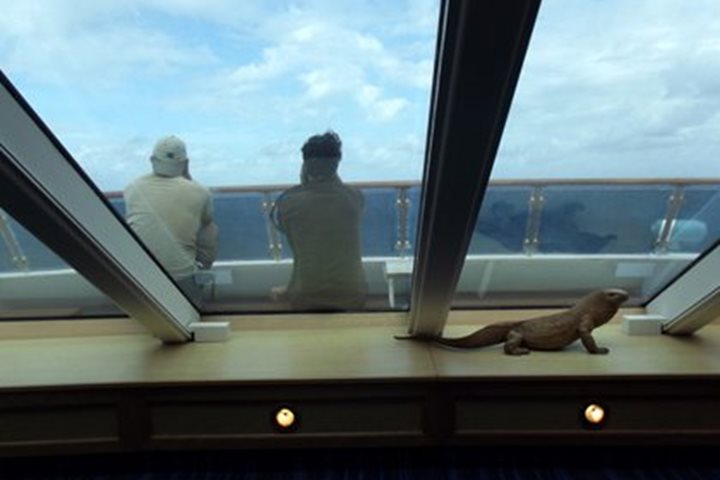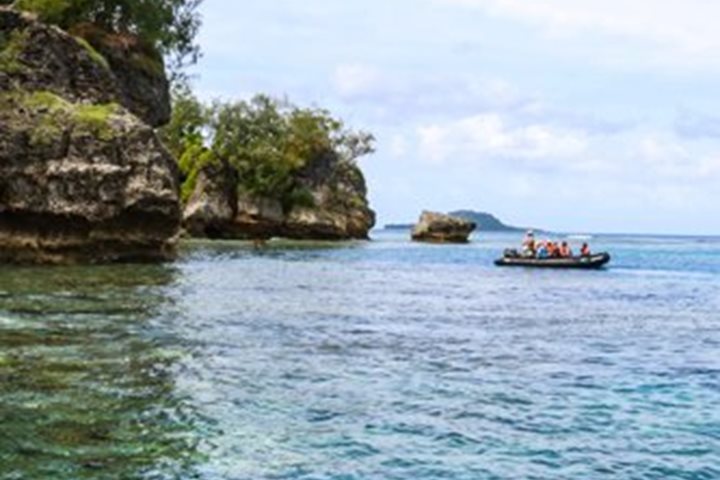Our journey through Melanesia will now take us 600 miles across the Solomon Sea from Papua New Guinea to our next landfall at Guadalcanal in the Solomon Islands tomorrow. A day at sea is an excellent chance to relax and reflect on the past few days in Papua New Guinea. While recognizing that in the time available we can only have scratched at the surface of this large and remarkably diverse country, we have enjoyed some remarkable opportunities to witness a culture that is entering the 21st century while still strongly linked to their traditions.
It is also humbling to realize that today we can make the 600 mile journey in comfort with all the modern amenities of the National Geographic Orion. While it may seem like a long way, and the open ocean seems like a huge space, for us the distance is really no big deal when compared to those who came here before us in voyaging canoes.
During our time in Papua New Guinea we have visited communities who still rely heavily on this centuries old technology to move throughout the region. With modern technology we can be sure of making our landfall tomorrow, thanks to reliable engines pushing us along at 12 knots, and numerous GPS devices on board to tell us exactly where we are. How different to those whose journey was a wind powered adventure out beyond the horizon and into the unknown.
But there is one aspect of the journey that has probably not changed over the years. No doubt those who travelled these waters before us also noted the passing seabirds and saw flying fish break the surface as they move away from the vessel. Perhaps their interest would have been more practical; does the presence of a bird tell us anything about the proximity of land? Can we catch any of these fish for food? But while the mode of transport may have changed, and today these creatures provide little more than passing interest for us, we are in some small way connected to all who have passed this way before us.







